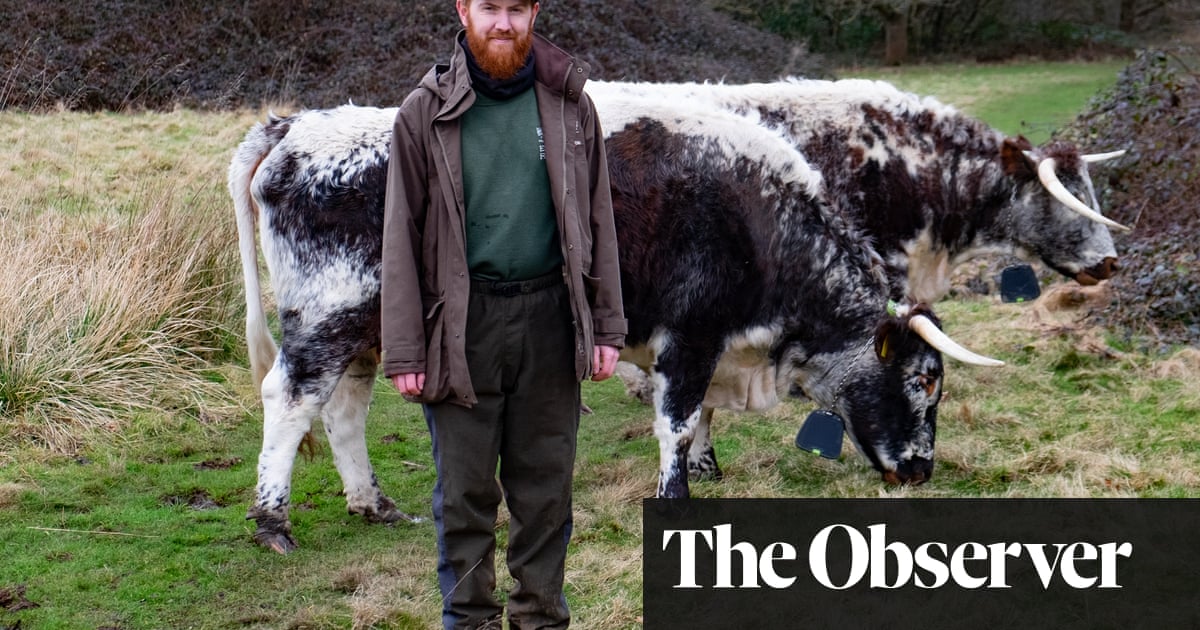Satellite technology creates virtual grazing areas in Epping forest - 4 minutes read

Epping Forest has swaths of designated land that is home to adders, grass snakes and common lizards, as well as white admiral and purple hairstreak butterflies, and mammals such as shrews and voles that, in turn, provide food for birds of prey and owls.
Now, at last, cattle in Epping Forest know their place – thanks to satellite technology. The English Longhorn cows and calves that live on the ancient woodland were recently fitted with receivers – which look like cowbells – that can pick up GPS signals, which are then used to create virtual grazing areas for the animals.
If an animal approaches the edge of its delineated area, its cowbell detects the boundary and starts to emit a sound that rises in pitch or eventually delivers a mild electric pulse as the animal tries to cross the boundary.
The technology means the forest’s cattle can spend their time in carefully selected spots without the need for barbed wire or electric fences to keep them from wandering across the roads surrounding the former royal forest at the northern tip of London.
The system, pioneered by the Norwegian company Nofence, has been adopted to control the herd of 66 animals that currently graze in Epping Forest and which help maintain the health of its 2,400 hectares (5,900 acres) of grass and woodland. Over the next few years, it is hoped the system will allow forest staff to increase the herd to around 150 animals.
Hundreds of cows and calves once grazed on the land under ancient rights that were granted to commoners, people who lived in a forest parish and who owned at least half an acre of land.
In the late 19th century, these rights came under strain as land was enclosed and housing developments spread. Protests began and the forest was eventually bought by the City of London Corporation and stripped of its designation as a royal forest.
It was decreed that from then on, Epping Forest would be “unenclosed and unbuilt on as an open space for the recreation and enjoyment of the people”. (The right to collect wood in Epping Forest also survives though this is limited to “one faggot of dead or driftwood” a day per resident and is rarely exploited.)
Recently, cattle have been brought back, triggering the need for a new solution. Fencing is not permitted in Epping Forest so at first underground cables were laid round the perimeter of grazing areas and cattle were fitted with tracking devices that gave them a mild electric shock when they tried to cross over a cable.
“However, you had to dig up the cable each time you wanted to move the cattle to a new grazing area,” said Phillips. “In addition, you had to dig up the cables if they broke down or needed servicing. We needed something more flexible.”
The Nofence system avoids these problems, said Phillips. Its receivers relay the exact position, determined by GPS, of each animal in the forest. That data is then transmitted to apps on the mobile phones of forest staff. Using these devices, they can then mark out the grazing area for each animal on a digital map that is stored on their phones.
“The cow learns to associate the sound’s rise in pitch with the prospect of being given an electric pulse – which is no stronger than the one it would get from an electric fence,” said Synne Foss Budal, general manager of Nofence UK. “As a result, it changes direction away from the boundary.
“We can monitor very precisely what a cow is doing this way. We can see that it knows the difference between the first pitch and the last pitch of the sound emitted, and that it knows exactly when a pulse is going to come. So they time it. They turn around at the last second so they can get the most of fresh grass at the boundary edge,” she said.
Crucially, these virtual grazing areas can be changed merely by altering their boundaries on a mobile phone app, said Phillips. “We can create a new virtual pasture by marking it on a phone while also creating a corridor that links their old pasture with their new one. The animals will wander down the corridor to their new grazing lands. There is no digging up of cables or knocking down fences. It is just right for Epping Forest.”
Source: The Guardian
Powered by NewsAPI.org